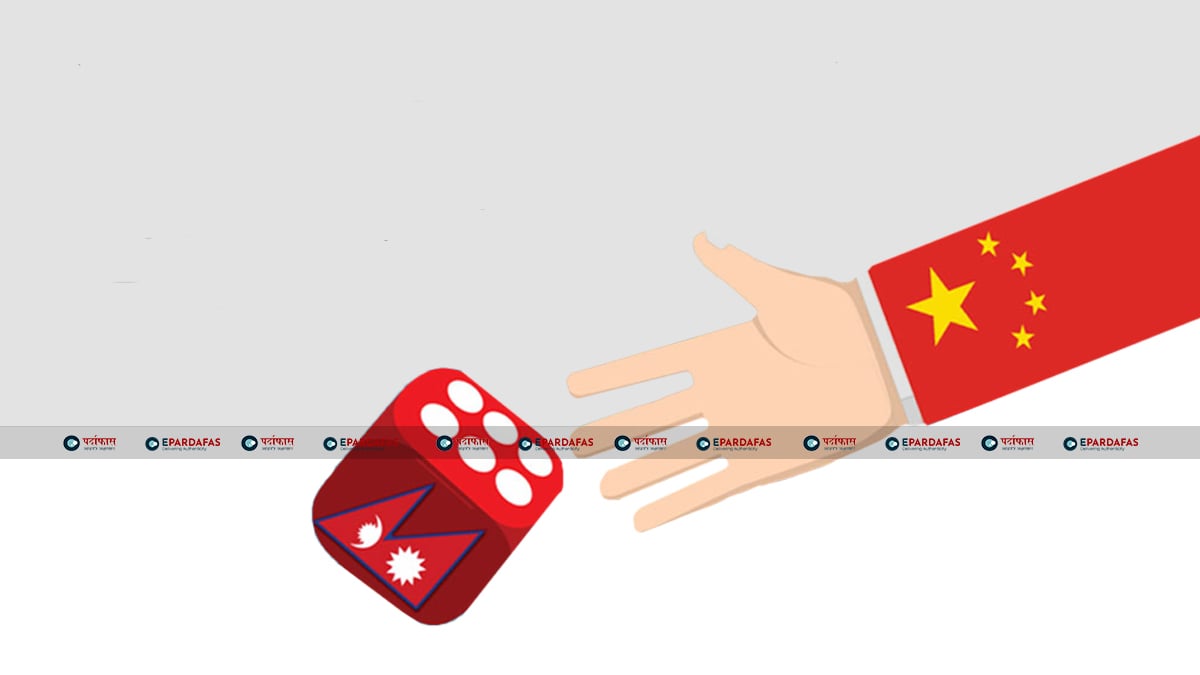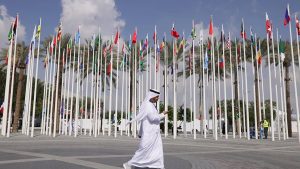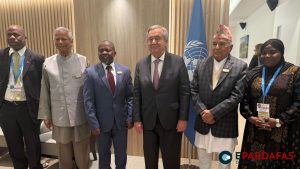
Why Could China’s BRI Lead Nepal into a Debt Trap?
The 16th meeting of the Nepal-China Diplomatic Consultation Mechanism took place in Kathmandu on Tuesday. Along with the meeting, discussions about the Belt and Road Initiative (BRI), an agreement previously made with China, have restarted in Nepal.
Nepal signed the agreement in 2017 to participate in this ambitious project of China. However, progress in implementing the BRI projects has been slow since the agreement. Moreover, criticism is mounting over concerns that, like other countries, Nepal might fall into a debt trap due to Chinese projects.
China has been insisting on implementing the BRI in Nepal. BRI implementation was also on China’s agenda in the meeting held on Tuesday.
Questions about BRI have also been raised in Parliament. During today’s ‘Direct Question and Answer Program with the Prime Minister’ in the House of Representatives, Rastriya Swatantra Party lawmaker Sishir Khanal raised concerns about the BRI framework agreement. Khanal pointed out that the agreement, which has significant implications for Nepal, has not been formally discussed in parliament. Khanal also asked the Prime Minister about the government’s plans to share information and initiate discussions on the BRI agreement in parliament.
Prime Minister Pushpa Kamal Dahal, who was present in Parliament to respond, did not dismiss concerns that Nepal might avoid falling into the trap of Chinese loans through the Belt and Road Initiative (BRI). However, he asserted that any agreement on BRI implementation would ensure that Nepal does not shoulder an excessive burden of debt.
He also mentioned that an agreement will soon be reached for the implementation of the BRI. Discussions have been underway to finalize the plan for advancing the BRI initiative. Currently, the final steps are being taken to proceed with this plan,” Prime Minister Dahal stated. “I believe there will be an agreement on this matter soon.”
He said that efforts are being made to convert the BRI project into a grant, and if that is not possible, a loan will be taken at a subsidized interest rate. However, analysts say that, as the Chinese side imposed high interest rates under the guise of subsidized loans during the construction of Pokhara International Airport, similar issues may arise again.

China’s ambitious plan
The Belt and Road Initiative (BRI) is a plan announced by China in 2013 aimed at facilitating infrastructure and economic development by connecting various countries through road and rail networks. Analysts often describe the BRI as a strategic effort by China to enhance its global influence and economic power.
Currently the world’s second-largest economy, China aims to surpass the United States in the coming years. Consequently, China’s engagement in regions like the Middle East, Asia, Africa, and South America has been growing. China is expanding its global footprint through cooperative agreements, loans, and investments.
To extend its influence and economic control worldwide, China emphasizes initiatives such as the BRI, focusing on infrastructure investment and poverty alleviation. However, analysts caution that careful consideration is necessary regarding the implementation of such projects, both domestically and internationally.
Impact on regional power balance
It is observed that the Belt and Road Initiative (BRI) will pose a challenge to the regional power balance for countries like Nepal. Analysts emphasize that Nepal, situated between two powerful nations, China and India, needs to carefully consider whether to implement this project, and if so, how and where to implement it given the circumstances.
Previously, Nepal faced significant opposition when considering support from the American organization MCC. Neighboring China also expressed its opinion on this matter. Therefore, it’s likely that views from India, America, and Western countries will also be considered regarding the BRI.
As a result, analysts suggest that Nepal should closely observe the outcomes of BRI implementations in other countries and make a decision based on the country’s interests.

What Is the Reality in BRI-Implemented Countries?
Last year, China stated that 150 countries and 30 international organizations participated in the Belt and Road Initiative (BRI) plan. Thirty-eight countries from sub-Saharan Africa, thirty-four from Europe and Central Asia, twenty-five from East Asia and the Pacific region, seventeen from the Middle East and North Africa, eighteen from Latin America and the Caribbean, and six from Southeast Asia have joined this project.
Although Nepal, Sri Lanka, Pakistan, Myanmar, Bangladesh, and Afghanistan have joined, the investment project under BRI in Nepal remains opaque. According to statistics, China is currently executing more than 2,600 large infrastructure projects in over 100 countries. China claims that more than $770 billion has been invested in these billion-dollar projects.
While it has been claimed that the BRI project will liberate about 7.6 million people from extreme poverty and lift 32 million people from moderate poverty by the year 2030, the reality contradicts the announcement made by Chinese President Xi Jinping. Countries that have embraced the BRI project have instead experienced increased poverty and destitution.
When discussing Pakistan, the China Pakistan Economic Corridor (CPEC) under Beijing’s leadership is currently facing a crisis due to transparency issues, debt problems, and corruption within the project. CPEC, a significant component of China’s ambitious Belt and Road Initiative (BRI), remains incomplete due to disorganization, debt crises, and corruption. In response, China has ceased issuing further loans. The government led by Shehbaz Sharif at the time decided to abolish the China-Pakistan Economic Corridor (CPEC) Authority upon revelations that Chinese power producers had halted 1,980 MW of production capacity due to non-payment of their Rs 300 billion dues.
Moreover, Pakistan’s highly anticipated Main Line (ML-1) railway project, which aims to connect the port city Karachi with Peshawar, has also encountered delays. International media reports suggest that these delays stem from unresolved differences between Islamabad and Beijing.
In Malaysia, BRI projects worth $11.8 billion were canceled between 2013 and 2021.
According to the UK’s Daily Mail, the Philippines has opted to suspend the $5 billion rail project, a flagship BRI initiative, after China failed to fulfill its commitments.
Similarly, Kazakhstan and Bolivia have also canceled BRI projects. Zambia, a landlocked country in southern Africa, is facing a severe crisis with an external debt burden from China exceeding $17 billion.
Zambia has emerged as a test case for Beijing’s debt trap strategy in Africa. The country has requested China’s assistance in restructuring loans from private lenders for major BRI infrastructure projects like highway bridges. Failure by China to address Zambia’s plea could lead the nation down a similar path to Sri Lanka.
Overall, it appears that China initially invests substantial funds for development under the BRI project. When evaluating China’s actions within the BRI initiative thus far, a pattern emerges where China provides loans to countries that struggle to repay them. China then takes control of the project for an extended period, influencing the country’s politics, business, and expanding its international network.
Experts estimate that only a few out of the total 149 countries and 32 international organizations that have signed MoUs with China for the BRI project can effectively manage the challenge of sustaining loans provided by China within the BRI framework. Most other countries are bound to come under China’s influence in various ways. Examining the Hambantota port built in Sri Lanka offers insight. Although this port was constructed on 1500 acres of land along the world’s busiest shipping route, it struggled to attract international trust due to its Chinese origins. In 2012, it only managed to draw 12 vessels, while a port located 260 km away, Colombo port, attracted more than 3000 vessels.
Following the 26-year-long ethnic civil war in Sri Lanka, the BRI project was introduced as a development initiative. The current situation in Nepal mirrors this pattern, with ethnic and religious conflicts being exacerbated. Seeds of discord were sown among the Kiratis, and amidst this turmoil, the BRI project was pursued. From Nepal’s perspective, considering a government and leadership ensnared by corruption, the country’s condition post-BRI could resemble Sri Lanka’s plight.
Given Sri Lanka’s inability to repay its loans during the project’s construction, it appears that China may lease the Hambantota port under China’s Belt and Road Initiative for up to 198 years, until 2099. A significant portion of China’s investment, approximately 80 percent, is focused on the port and the industrial area on Hambantota Island. Therefore, it is conceivable that China may continue to lease the project from Sri Lanka beyond the initial 99-year term.
Italy also withdrew from the BRI, citing strategic reassessment, joining a trend of countries reevaluating their involvement amidst geopolitical tensions and economic pressures. Prime Minister Giorgia Meloni referred to Rome’s participation in the BRI as a “mistake.”
- Indian Army Chief General Upendra Dwivedi Meets PM Oli, Highlights Deepening Bilateral Defense Ties
- Bimalendra Nidhi: BRI Agreement Requires National-Level Discussion Before Signing
- PM Oli Urges Investment Amid Economic Reforms, Promises Stability and Prosperity
- Nepali Congress Rejects Loans Under China’s BRI, Pushes for Grant Assistance Ahead of PM Oli’s Visit to Beijing













Comments